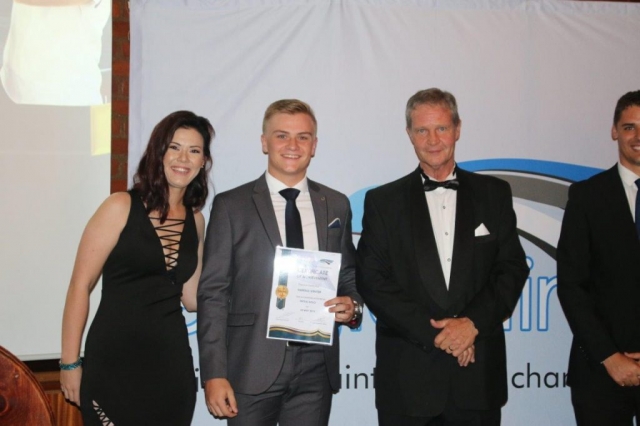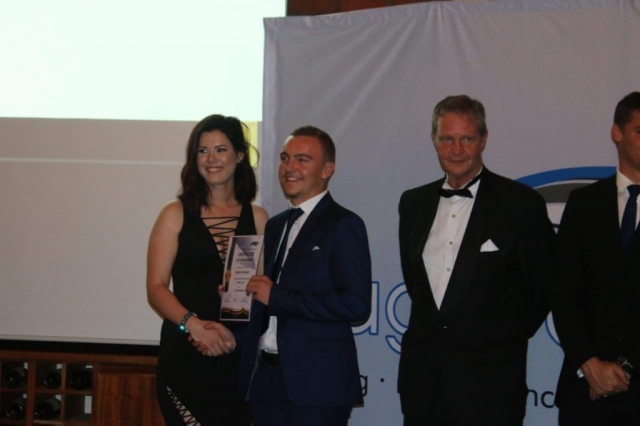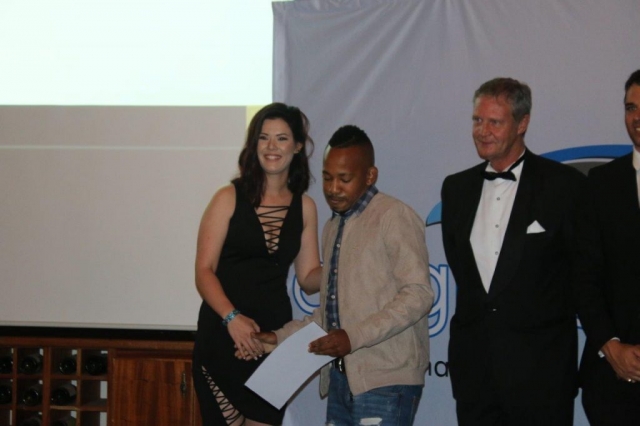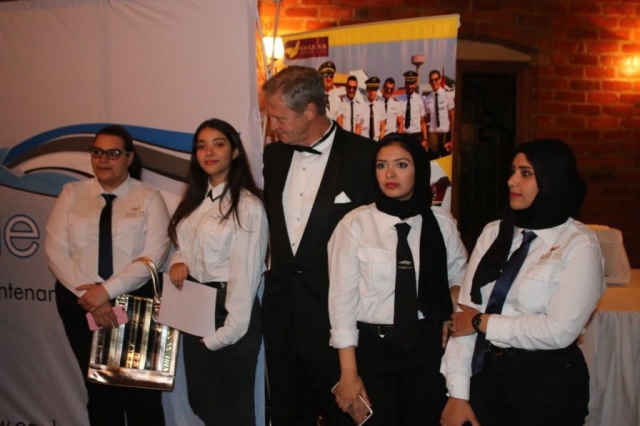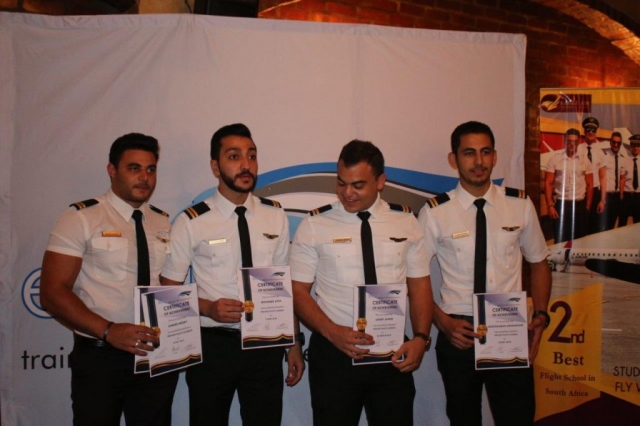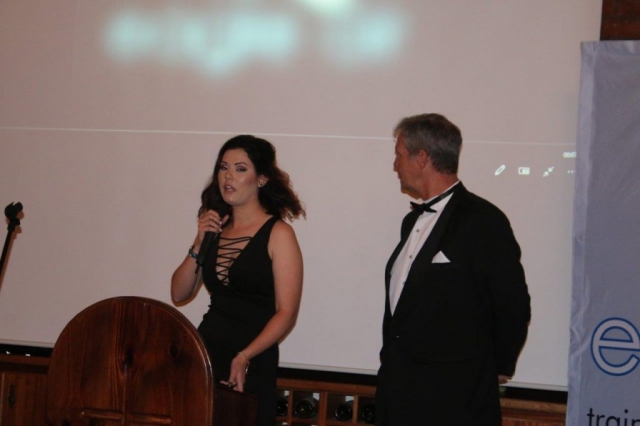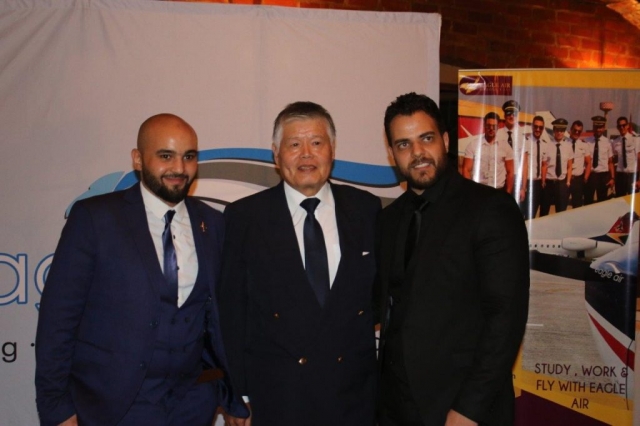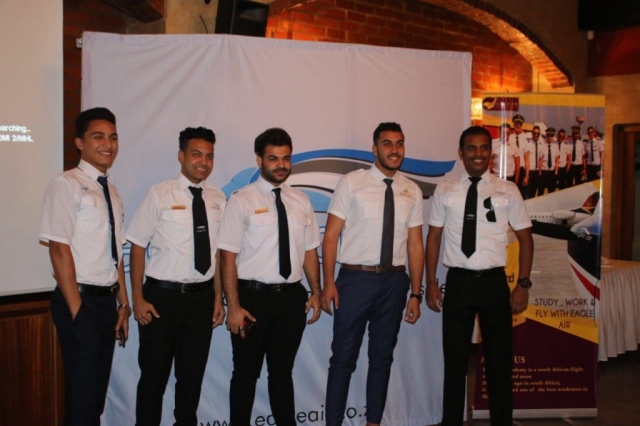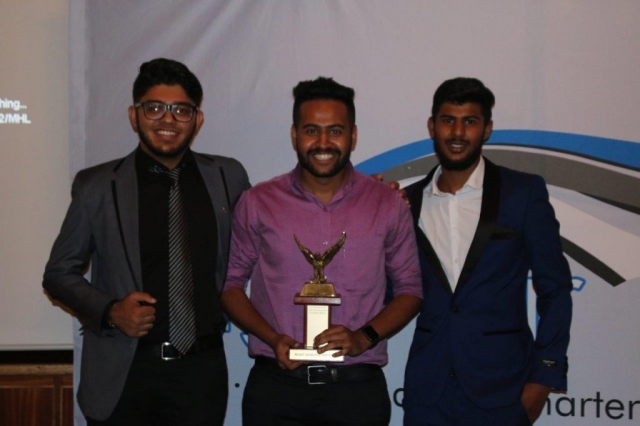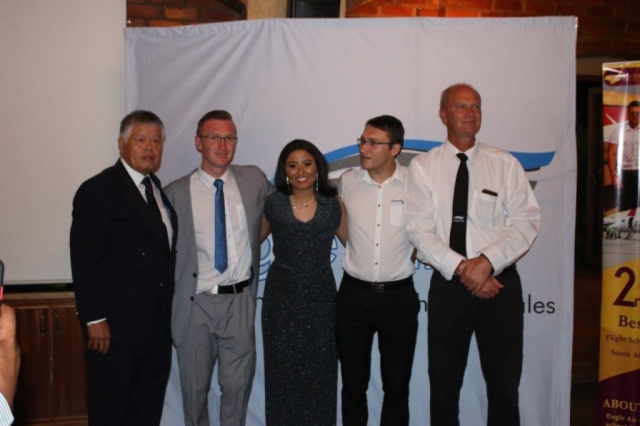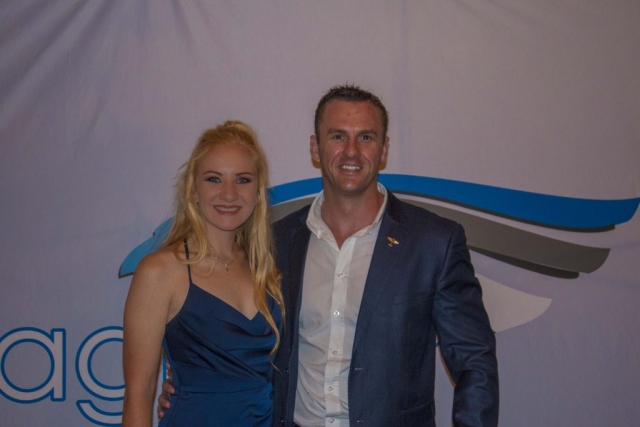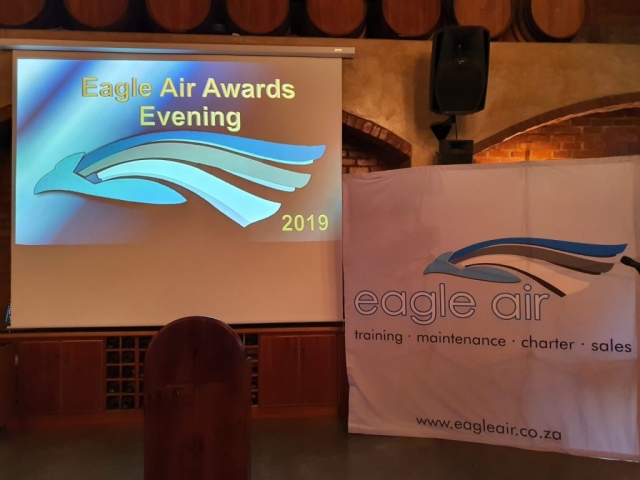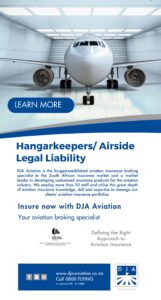Category Archives: NewsLetter – Other
DISNEY AFRICA BRINGS FESTIVE CHEER FOR LIFT TRAVELLERS

The video can be viewed here: https://youtu.be/8q9l-0EF9mQ
JOHANNESBURG, SOUTH AFRICA (13 DECEMBER, 2023) – The Walt Disney Company Africa’s #MayYourWishesComeTrue campaign continued the festive celebrations this December with a special surprise-and-delight activation aboard the Disney-inspired LIFT airplane.
Over 150 passengers, traveling from Johannesburg to Cape Town were welcomed by “Wish Agents” at their boarding gate at OR Tambo International Airport on 1 December, with each child asked what their wish for Christmas was. With their wishes adorning a special Disney-inspired Christmas tree, the young passengers boarded flight GE123, unaware that a mere two hours later those wishes would be fulfilled.
Behind the scenes the requests were communicated to Disney’s Wish Agents, on standby at Canal Walk Shopping Centre in Cape Town, who swung into action to shop up a storm, wrap the gifts and transport them to Cape Town International Airport in time for the passengers to disembark.
From bicycles, “Disney Princess The Little Mermaid” figurines, Lego® sets to even Spider-man Sony PlayStation 5’s, all the requested wishes came true as passengers disembarked the plane and entered the specially-branded walkway to meet the Wish Agents. In addition, each traveler was gifted a Disney Mickey plush and a subscription to Disney+.
Comments Christine Service, Senior Vice President and General Manager of The Walt Disney Company Africa: “To mark our 100th year anniversary, The Walt Disney Company has been celebrating the fans and storytellers who have sparked the joy and magic that embodies Disney for over 100 years. What better way to cap our year-long celebrations than with this wonderful festive moment, inspired by our “May Your Wishes Come True” campaign.”
“At LIFT we’re all about elevating our travellers’ experiences, and witnessing the pure joy which resulted from this activation was nothing short of spectacular. On behalf of all of us at LIFT, I’d like to thank The Walt Disney Company Africa team for making our passengers’ wishes come true. Our partnership with Disney has been magical and we’re pleased we can bring a sense of fun, wonder, and excitement for the whole family over the holiday period, as we continue to fly our co-branded celebratory aircraft and spoil kids with Disney activity packs”, says Jonathan Ayache, LIFT CEO.
The magical moment kicked off LIFT’s 12 days of Christmas, continuing the festive surprises for all passengers.
For more information, please contact:
For The Walt Disney Company Africa:
Luane Lavery
PR Manager: Disney+ and Studios
For LIFT:
Jessica Gois
Strategic Communications Consultant
About LIFT:
LIFT is operated by Global Aviation Operations (Pty) LTD trading as LIFT. LIFT flights currently operate between Johannesburg, Cape Town and Durban. Global Aviation Operations has been a provider of ACMI (aircraft, crew, maintenance and insurance) services to airlines, locally and internationally since 2001 and is the largest dedicated ACMI specialist in South and Sub-Saharan Africa.
LIFT operates a fleet of Airbus A320 Aircraft, state-of-the-art 4th generation with fly-by-wire control systems, Flight Envelope safety protection and 3B Auto-land certification that allows for safe landings in poor visibility conditions.
About The Walt Disney Company EMEA:
The Walt Disney Company has been in Europe, Middle East and Africa (EMEA) for over 80 years and employs thousands across the region. Between Disneyland Paris and its other iconic brands, including Disney, Pixar, Marvel, Star Wars, National Geographic, 20th Century Studios and ESPN, The Walt Disney Company EMEA entertains, informs and inspires millions of consumers in more than 130 countries through the power of unparalleled storytelling. Disney+, the company’s direct-to-consumer streaming service, is currently available in 60 markets across EMEA.
About Disney Parks, Experiences and Products:
Disney Parks, Experiences and Products brings the magic of The Walt Disney Company’s powerful brands and franchises—including Disney, Pixar, Marvel, Star Wars, ESPN, 20th Century Fox and National Geographic—into the daily lives of families and fans around the world to create magical memories that last a lifetime. When Walt Disney opened Disneyland in Anaheim, California, on July 17, 1955, he created a unique destination built around storytelling and immersive experiences, ushering in a new era of family entertainment. More than 65 years later, Disney has grown into one of the world’s leading providers of family travel and leisure experiences, with iconic businesses including six resort destinations with 12 theme parks and 52 resorts in the United States, Europe, and Asia; a top-rated cruise line with four ships and plans for three more ; a luxurious family beach resort in Hawai‘i; a popular vacation ownership program; and an award-winning guided family adventure business. Disney’s global consumer products operations include the world’s leading licensing business; the world’s largest children’s publishing brands; one of the world’s largest licensors of games across all platforms; Disney store locations around the world; and the shopDisney e-commerce platform.
Preparations for SAPFA Nationals Rally
As the final to be held on the 15th, 16th and 17th of April 2021 at Stellenbosch Flying Club are being put in place, it is time to reflect back on the Stellenbosch (practice) Rally that was held on Saturday 27 March 2012.
After some rain through the night, the skies in the Cape were perfect for flying. The day started nice and cool with little to no wind but this being the Cape… wind will always arrive when you need to make that perfect spot landing. Everyone was ready for the SAPFA Rally being held at the Stellenbosch Flying Club. Easily the flying club with the best views (and breakfast as well).
Pilots and navigators met up from early to top up the bodies with some coffee and a warm breakfast have a chat with fellow aviators and friends before the briefing that was to start at 9 am. Once the briefing started, the competitive side of pilots and navigators alike kicked in. Game on…
There was ample opportunity for those who had questions to ask them follow by the prepping for kicking off. Many had made notes during the briefing, clipboards came out, energy snacks and bag prepared, and even press tick to secure the smaller piece of paper that may be needed during the flight. Then the big moment… the locators were allocated and papers handed out. People couldn’t wait to get into the air and experience the beauty of the Cape. The route was to be a challenging one but also promised some good scenery.
With papers in hand, tanks topped up (humans and aircraft) and the day getting better and better the rally was about to start.
As the first batch of pilots took to the skies and getting to their targets, the normal Stellenbosch traffic and visitors were moving around. Some breakfast runs from Morningstar were made as well. As the day progressed and aircraft heading back, the wind started making an appearance. Getting stronger and stronger and I am pretty sure many pilots were hard at focus to stay as close as possible on target with the spot landing being the last major challenge.
The Cape wind just added another level of complexity to the already challenging route, next up… the landings. There was the odd bounce here and there but all in all good and some very great landings were made as pilots kept their cool and tackled the crosswind.
The second batch of pilots took to the air and by now they were fully aware of the wind. As the pilots went to hand in their locators and awaiting their results, the normal club visitors enjoyed the scenery with a cold beer and some lunch, children having fun, dads (even some moms) excited to show their young ones the aircraft… a very relaxed atmosphere while upstairs nervous pilot and navigators awaited their results. With the last pilots and navigators back at Stellenbosch Flying Club and their papers handed in, it was time to relax and enjoy a cold one.
Time for the announcing of the winners and where each team was ranked. Everyone was in agreement that the route was challenging (the route did have a name but there are children here, so we will just go with the route that shall not be named) but everyone was in the same boat. With the competition over, the social started and friends were friends again.
We all now look forward to the SAPFA National Rally Flying Championships held here in the Cape at Stellenbosch Flying Club.
I can only speak for myself but this was a most enjoyable day out. Even though the sanitizing and masks were in place with temperature checks, it was good to be out again. To experience the beauty of our country and back to the thing we love most… flying!
SAPFA Rally Practical Training Camp – 22 Feb 2020
SAPFA Rally Practical Training Camp – Brakpan 22 February 2020 – by Rob Jonkers
After learning the theoretical side of Navigation plotting at the training camp held at Aerosud on the 18th of January, it was time to put into practice what was learned with a practical flight. The SAPFA national coach Jonty Esser put together a short route in the Brakpan Heidelberg area with 4 turnpoints to be flown by participating teams.
The weather however did not play ball at all, restricting participants to arrive by air, however many decided to drive in, to at least do some ground school. At the end there were 9 teams that participated. On hand from the SAPFA Protea members were Jonty Esser, Frank Eckard, Sandi Goddard and Rob Jonkers imparting their knowledge to the teams.
The theme of the morning was to gain knowledge on practical flying, how to accurately bingo each turn point in time, how to approach the start, this always being the most difficult part of any rally, firstly to find it, and then to get there at the start time. Then the dynamics of keeping on time on each leg, approaching the next turn point and identifying the photo being correct or incorrect. First up was Frank Eckard who explained all the required strategies of flying, explaining that you have to be in the right frame of mind to take part in this sport, extreme focus and concentration will get one to the winning post.


Frank Eckard – Strategies of Flying a Rally
Thereafter Jonty provided an outline to the planned flight route for the day – which could not be flown, but an explanation of how to set up the aircraft to fly the route, to get to the nominated 1000 ft altitude, set the flaps and power setting, then to adjust timing by changing the aircraft’s attitude to speed up or slow down, rather than utilize power changes as power changes disturb the fundamental speed set up.


Jonty Esser – How to set up your aircraft in flight
After Jonty, Rob showed a short video of a practical flight demonstrating what photos look like on the ground and the visual angles and distances to be able to recognize them, and from what altitude these would be best visible.

A practical out of the cockpit view of en-route photo recognition
After a short break, it was decided to carry out a real plotting exercise of the Rand Rally Challenge against the clock with a 30 minute deadline, essentially 2 minutes per plotting point. It gave everybody an incentive to attempt to beat the clock. With new teams this proved daunting, thus more focus was provided on techniques of using the tools and developing the skills to use them.

Clarissa & Kerry busy with their plot
Clarissa & Kerry busy with their plot

Milan, Caroline & Andy busy with their plots

Karyn & Leon happy they have aced their plot in the allotted time
The Track shown of Route 2 – an anti-clockwise route
Awards Function – Eagle Air 2019
Awards Function – Eagle Air 2019
Also read
Eagle Air-The Fly Away March 2019
Eagle Air’s State-of-the-art Flight Simulator
Aviation Central was invited to attend the glamorous Eagle Air 2019 Awards and Year End function. With Eagle Air being Aviation Central’s flight school of choice in Gauteng North, we simply could not pass up on this offer. The evening was also attended by SAA Training Captain and DFE Francois Naudè and MANGO Training Captain and DFE Marc de Klerk.
 The evenings proceedings kicked off at 18:00 at Morgenzon Estate in the famous Airport road. We were all welcomed with a glass of champagne on arrival. The evening started with a casual chat followed by starters, an amazing biltong soup! After starters the Initial Solo and PPL certificates were handed out.
The evenings proceedings kicked off at 18:00 at Morgenzon Estate in the famous Airport road. We were all welcomed with a glass of champagne on arrival. The evening started with a casual chat followed by starters, an amazing biltong soup! After starters the Initial Solo and PPL certificates were handed out.
The proceedings then continued with certificates handed out for Night Rating, Initial Multi, Engine Rating, CPL Multi-Engine Instructor Rating, Grade III Flight Instructor Rating, Grade II Flight Instructor Rating and ATPL. We were then treated to a top-notch main course for dinner.
About Eagle Air
TR Eagle Air (Pty) Ltd has been in operation as an elite flight school for more than 10 years and has as such been registered as an Aircraft Training Organization with the South African Civil Aviation Authority.
Initial Solo
Ahmed Helmy
Hardus Venter
Ivus George Mkuralinda
Ashleigh Mogane
Omphemetse Phetoe
Joseph Ene-Okon
Nedaal Asaad
Quinton Stewart
Mark Mangeni
Maria Mwanza
Thabiso Ramosamo
Ayman Kayyali
King Malema
Krestah Hanongo
PPL
Sheref Ahmed
Abdelrahman Aldelmagid
Trinity Jongwe
Louis Minnaar
Rhyno De Grange
Bambihlelo Gobingca
Ahmed Helmy
Lene Hurter
Night Rating
Ashwin Sylvester
Ahmed Helmy
Trinity Jongwe
Diana Ndouvhda
Vulindlela Ndolvu
Ibrahim Elmostafa
Initial Multi Engine Rating
Ravi Vansia
CPL
Timothy Brandt
Mariska Wisse
Kennedy Tshivhase
Multi-Engine Instructor Rating
Hennie Botes
Marcelle Nienaber
Grade III Flight Instructor Rating
Hennie Botes
Timothy Brandt
Grade II Flight Instructor Rating
Huzaifa Umar
ATPL
Damian Shima

The Eagle Air Story: (Taken from their website http://eagleair.co.za/home/ )
“OUR STORY
Eagle Air is owned by Percy Rudman, Chih-Jen Tseng, Iemei Tseng and Brandon Mendillo. We believe that our owners, management, instructors and students are all owners of Eagle Air and together we build our own future.
This family atmosphere is the basis of our training at Eagle Air without jeopardising on standards and degree of discipline. Our pledge to all our clients is to provide safe, efficient and cost effective flight training. Eagle Air uses the most reputable maintenance organisation on the airport. Safety is our main concern! The maintenance facility exposes pilots to the mechanical aspects of aircraft maintenance thus enhancing their total understanding of aviation.
Our application for a licence charter division (Part 135) that exposes pilots to the real aviation ‘day to day’ flying world is pending. Our application for a charter licence includes medical evacuations (Part 138). The application should be finalized within a number of months. The latter would also enhance our pilots opportunities for successful employment We have a wide range of aircraft available for training, advanced training and type ratings. Eagle Air’s Operational Specifications enables us to provide training on aircraft ranging from Single Engine Piston, Complex Single Engine Piston, Piston Twins and Jet (Twin Turbine).
Although we have a company structure which we adhere to, we have a so-called open-door approach enabling students and pilots to liaise directly with Management and even with the Directors. At Eagle Air aviation is our passion and students and pilots will immediately experience the camaraderie that exists at Eagle Air. Be prepared to become part of the Eagle Air Team the moment you walk through the door!
All our Directors, members of the Management Team and personnel are qualified pilots and therefore have appreciation and understand the challenges in the field of aviation. Eagle Air has a broad base of international students from Kenya, Mozambique, Botswana, Nigeria, Zimbabwe, Abu Dhabi, China, Ghana, Angola and India, to name but a few.
Our experienced and focussed family of experts are well trained with the skill and qualifications to carry out their functions with diligence and skill. It is our vision that Eagle Air may be of service to all prospective students in the Private, Professional and Public sector.
Our wide variety of aircraft available will give our student the edge in the aviation community.”
Click on photos below to enlarge
How do I become aircraft maintenance engineer?

What is an aircraft maintenance engineer and How do I become one?
Firstly, we need to tell you what an aircraft maintenance engineer is and some of the duties required to be performed.
The job of an aircraft mechanic is to keep aircraft operating safely and efficiently. People’s lives are at stake which makes this job extremely important. Aircraft mechanics service aircraft, overhaul engines and parts and test the every-day smooth running of aeroplanes or helicopters.
What does an aircraft mechanic do?
• Conduct safety inspections
• Service aircraft
• Troubleshoot and solve problems
• Overhaul engines and parts
• Repairs parts/ install new ones
• Tests various aircraft systems and engines
• Order parts
• Keeps strict records
• Commits to lifelong learning
Secondly, it is important to understand the different types of trades available:
- Aircraft Maintenance Engineer (Avionician):
An aircraft maintenance engineer (avionician) overhauls, repairs, modifies and tests a range of electrical, electronic, instrument and radio communications and navigation system components in a workshop environment, after they have been removed from the aircraft. Examples of these types of systems would be: generator and power distribution systems, protection systems, autopilot and integrated flight systems, environmental control systems, and radar and communication systems.
- Aircraft Maintenance Engineer (Mechanical)
An aircraft maintenance engineer (mechanical) maintains, services, inspects, tests and undertakes fault diagnosis of airframe, engine (including propellers and rotors) and electrical systems, components and accessories on aircraft. Examples of such components are: landing gears; wheels and brakes; skids; pneumatic and hydraulic systems; fuel systems; flight control systems; environmental control and pressurisation systems; fire detection and prevention systems; oxygen systems; containerised cargo handling systems; doors and windows; lighting systems; and ice and rain protection systems.
Thirdly, what is the minimum admission requirements?
18 years and older.
Grade 12/N3 or Equivalent
Mathematics 50% of higher
English 50% or higher
Maths Literacy 50% + will be considered subject to the below Applicants that do not meet the course acceptance criteria but do possess a Grade 12/N3 or equivalent certificate will be subject to an aptitude test prior to acceptance and admission to MATA.
What is the Duration of the course?
One (1) Year Basic Training (42 weeks) at the MATA Training Academy (Theory and Practical Training)
What Happens after the first year of training?
Once you have completed your first year:
1. You will have fulfilled the TETA requirement.
2. You will be issued with a certificate
3. You will have practical and theoretical knowledge of the field of study you have chosen.
Thereafter MATA liaison officers will assist with placing you as an apprentice with an Aircraft Maintenance Organisation (AMO)
Unemployed learners placed at an AMO are NOT guaranteed that such AMO will employ you! No tertiary education institution can guarantee job placement!
4. You will then be required to obtain a total of 2 880 hours and a minimum of 18 months of practical experience as an apprentice at an AMO.
These hours must be logged in your logbook (downloadable from the TETA Website) as proof of aircraft maintenance experience, in order to qualify to apply for your Trade Test.
5. After you have applied to TETA and the DHET for your trade test (MATA will guide you through the process and help you to apply)
MATA will conduct a Trade Test Preparation Phase with you prior to your Trade Test Examination Days to ensure that you are adequately prepared for the most important exam in your aviation career. MATA is a certified Trade Test Centre.
Mata Apprentice technical training has been recognized to be the best. Not only by providing top quality instructors and training, but by providing the industry with top quality engineers. Not only has MATA had a 98.8 % pass rate but with our newly approved trade test center, MATA students can be proud to be furthering their careers with a trusted brand. MATA is also a European aviation approved training facility.
Contact MATA:
eMail : info@matasa.co.za
Phone: 011-395-4144
Click on photo to enlarge
Advertising on Aviation Central

Aviation Central
477 Servaas street
Pretoria West
0183
Aviation Central takes great pride in extending an opportunity to you to advertise with us on our online platforms …
About Aviation Central:
Aviation is an online-based Aviation Media house specialising in Aviation Events.
Our 1st Priority is Air shows & Aerobatic competitions, followed by Air Races, Fly-in’s, Plane-spotting and other aviation-related competitions.
We specialise in keeping our South African aviation-loving public updated on all these events as well as special aviation events, fly pasts and special visiting aircraft. Examples of these are the Presidential inauguration, the recent visit of the Russian bombers and the arrival of SAA’s 1st Airbus A350-900.
We cover these events for the entire Southern African region (South Africa, Namibia, Lesotho, Swaziland, Botswana, Mozambique, Zambia, Zimbabwe).
Our team currently comprises of 6 members. In addition, we are currently mentoring a Grade 10 pupil in aviation media and photography. All our team members dedicate their time and energy at their own cost and personal time. We all have fulltime “day jobs” outside of the Aviation industry.
Aviation Central was initially founded in 2009 and has grown into a major role player in the online and social media space of Aviation in Southern Africa. We are official media partners to Africa Aerospace and Defence.
We have been running the official Facebook page for the Swartkop (SAAF Museum) Air Show since 2015 and were also media partner to AERO South Africa 2018. We have a Facebook following of over 33 000 and, at the current rate of growth, we expect to have over 40 000 followers before Africa Aero Space and Defence 2020.

Dec 2020 Facebook Stats
We also have about 10 guys and gals that often share photos and stories with us. We have grown to a point where we need to expand our attendance at more Air shows and other Aviation Events to keep our followers informed and updated. Our main focus point currently are the air shows and keeping our public informed about them before, during and post air show. Our larger following is the typical aviation and air show lover. The chap that dreams of flying, doing his Pilot’s licence or just going on a scenic flight. Planning his next holiday, not only around the accommodation and activities, but also on what Aircraft and Airline he can get a seat on. The chap that will always look up when an Aircraft flies overhead.
Our main expenditure currently is spent on our travelling costs to attend events, costs to cover camera equipment, website hosting as well as data costs for live video recording.
We are also in desperate need of a good entry level video camera suitable for aviation photography.
Who should advertise with us and why?
Considering the details above, any professional aviation business will most certainly benefit by placing an advertisement with us. Those that will benefit the most are, Flight schools, Cabin Crew Training and Technical Training organisations. Scenic Flight companies and Commercial Airlines will also most certainly benefit by advertising with us. Accommodation providers located in the vicinity of Aviation Events will also benefit by advertising their accommodation with us.
For R600 per Month you will receive:
2 x posts on our Facebook wall/page for the month.
1 x advert on our Website for the month running for the full month.
1 x Advert in our Monthly Newsletter (New and still low visibility).
Our Facebook cover image is also up for rental:
Subject to availability, preference will be given to major Aviation events.
R500.00 per week for a cover image. This includes an advert that will be placed on our website
(Priority will be given to aviation events).
This is the perfect spot for Air Shows, Aviation Open and Career days and Scenic flights. Image properties for the cover photo needs to be 820 pixels wide and 312 pixels tall.
Below is an example of the cover image:

Terms and Conditions:
- All images and text used for adverts are to be supplied by yourself.
- Text needs to be in such a format so we can just “copy and paste” it where required.
- Cover images for Aviation events are given higher priority, this is however, available to everyone.
- Cover image Prime spot can only be booked a maximum of 6 weeks in advance (1 – 6 weeks per booking).
- Payments are to be made before adverts are to be placed.
- The 2 x Facebook posts will be pre-scheduled on dates selected by yourself.
- We are tax registered and an invoice will be provided to you.
- Book and pay for 1 full calendar year and only pay for 10 months, this excludes Cover image rental (you save R1200).
- There are 6 and 12 month contracts are available.
Photo image sizes to be used for advertisements…
Website
667 pixels Width and 1250 pixels in Height (This is our preferred option).
And / Or
828 pixels Width and 315 pixels in Height.
940 x 788 pixels + Text.
The content text needs to written in such a format that we can just “Copy and Paste” it into the post on our Facebook wall.
This information needs to be sent to us once every 2 weeks as your advert will be posted twice per month.
The posts can be scheduled for a specific date and time – i.e. future-dated.
Sponsoring Team Aviation Central to attend an Aviation Event:
Also available are Sponsorship opportunities to help Aviation Central team to attend events.
If you can help us to attend an event, we will place free adverts for you for the month prior to the sponsored event as well as during the month of the event.
We will mention and/or tag you in all posts on Facebook and on our website on the build-up to the event.
We can also offer “magnet” style branding to our vehicles we use to travel to and from the events.
Branding need to be supplied by the sponsor.
Your company branded clothing in the form of caps and T-shirts can also be used by the team on a sponsored trip to attend an Aviation Event.
Banking Details for online Payments:
EVENTS AVIATION NEWS (PTY) LTD
Bank FNB
Account Number 62792754519
FNB Universal Branch Code 250655
Tax Number 9328355228
Kind Regards
Lettie van Emmenis
Aviation Central
+27 81 479 5426
Flippie van Emmenis
Aviation Central (Team lead)
+27 81 270 4430
Rostec to launch production of the T-500
At CIPR-2019, Sergey Chemezov, CEO of Rostec State Corporation, and Rustam Minnikhanov, President of the Republic of Tatarstan, launched the project for building an aircraft assembling facility and an aerodrome for experimental aviation in Tatarstan. The construction will begin in 2020, and commissioning of the facility is scheduled for 2022.
The new enterprise will assemble T-500 and other airplanes based on this model, including two-seat and unmanned versions. The experimental aviation airfield will allow performing function check flights and trial flights of the newly produced airplanes in the immediate vicinity of the production workshops.

‘Creating modern production facilities and competitive civilian products is one of the key objectives of Rostec State Corporation. High-tech production facility capable of manufacturing up to 100 aircraft per year will be opened to produce cutting-edge multi-functional T-500 airplane, and the total investment will be about 2.5 billion rubles. T-500 has a broad scope of application, including aerial chemical works, facilities monitoring, and forest protection. I am sure that the aircraft will be in demand not only in Russia, but also abroad, in Latin America, Africa, Europe and the CIS,’ said Sergey Chemezov, CEO of Rostec State Corporation.
The project is implemented by Rostec State Corporation jointly with the Republic of Tatarstan under the agreement on creation and implementation of the Russian national system of aerial chemical works in Tatarstan, which was signed at MAKS-2017. A plot of land for the facility construction has been allocated by the Government of the Republic of Tatarstan. The territory of the enterprise will be included in ‘Innopolis’ special economic zone, allowing it to benefit from the appropriate preferential conditions, including tax relief.
The key elements of the airframe costruction made of domestic composite materials will be manufactured by Obninsk Research and Development Enterprise ‘Tekhnologhia’ n.a. A.G. Romashin (part of Rostec State Corporation). The project will be managed by Tekhnologhia’s subsidiary Aeropraktika LLC. Residents of the SEZ ‘Innopolis’ will also participate in the project; they will develop software for the project of creating of the Russian national system of aerial chemical works.
Rostec is a Russian State Corporation that was established in 2007 to facilitate the development, production and export of high-tech industrial products designed for civilian and military applications. The Corporation comprises over 700 organizations in 60 constituent entities of the Russian Federation that are currently part of 15 holding companies and 80 directly managed organizations specializing in manufacturing military-industrial, civilian and dual-purpose products. Rostec’s portfolio includes well-known brands such as AVTOVAZ, KAMAZ, Concern Kalashnikov, Russian Helicopters, UralVagonZavod, etc. In 2017 the consolidated revenue of Rostec reached 1 trillion 589 million rubles, while the consolidated net income and EBITDA amounted to 121 and 305 billion rubles respectively. According to Rostec strategy, the main objective of the Corporation is to ensure that Russia has a technological advantage in highly competitive global markets. Rostec’s key objectives include the introduction of a new techno-economic paradigm and digitalization of Russian economy.
How to Become A Flight Attendant
Have you ever asked yourself the question, “How do I become a Flight Attendant?”
With S.MAB Training Academy
Have you ever asked yourself the question, “How do I become a Flight Attendant? If you have this article is written with you in mind. A career as a Cabin Crew Member is an exciting and rewarding profession. It is also a great way to travel the world while getting paid. This article discusses the requirements you need to meet and the steps you should take to turn your dream into a reality.
Firstly, you will need to meet the following basic requirements:
• You must be 18 years or older for a SACAA Cabin Crew License
• You must have a matric certificate
• You must be able to speak, write and read in English
• You should not have any visible tattoos
• You must be able to swim
• You must have a valid Class 4 Medical Certificate
Secondly, you will need to have obtained your Cabin Crew License issued by the South African Civil Aviation Authority. To get your Cabin Crew License you must (1) Register with an Approved Training Organisation, (2) Successfully complete the Flight Attendant course and (3) pass the Civil Aviation Authority Cabin Crew license examination.
Do you know the type of skills that airlines are looking for? Theyare seeking to hire people who can consistently display the following:
• Provide optimal and regulated safety and security standards
• Provide great customer service even when dealing with difficult customers
• The ability to keep calm during emergency situations and respond appropriately
• The ability to work and communicate well with people from diverse cultural backgrounds
• Professionalism, responsibility and reliability
• Solution oriented thinking

The S.MAB Training Academy Advantage
The S.MAB Training Academy offers two different courses designed for those aspiring to become qualified Flight Attendants.
We offer the Basic Flight Attendant Course (2-month) and an Advanced Flight Attendant Course (4-month). Our facilitators are among the best within the industry boasting extensive experience with airlines such as BA Comair, Emirates, Mango, Global Air Cote d’Ivoire, South African Airlines, Springbok Classic, Sky Class, Senegal Airlines, private VIP flights and more. We pride ourselves in delivering exceptional learning experiences and positioning our learners to excel in the industry. Our curriculum includes but is not limited to following modules, Safety and Emergency Procedures, Dangerous Goods, Fire Fighting, Aviation Medicine, Grooming, Amadeus, End-User Computing and Ditching.

 Click here to read on How to become a Pilot in South Africa
Click here to read on How to become a Pilot in South Africa
2019 Air Show Aircraft attendance list

2019 is not a big year for airshows in Southern Africa as some got cancelled as well as the economic situation in Southern Africa not looking positive.
However we will see the Stellenbosch, Mafeking and Maputo air shows which are not regular shows. Regarding the availability of aircraft we have not seen any slowdown with most Pilots and Aircraft eager to get in the sky and wow the crowds. We at Aviation Central are extremely positive and hopeful that we will see more shows and Aircraft in 2020 with both the AERO Club of South Africa and SAAF celebrating their centenary birthdays.
We will try to keep this list updated as best as possible, but please contact us if you feel we missed any aircraft.
Aircraft list 2019

Aircraft list 2018

Mango Introduces Split Scimitar Winglets
We were kindly invited by Mango’s Grant Timms to witness the first test flight as Mango (One of South Africa’s low cost airline) introduced the first of eight aircraft that will have the Split Scimitar Winglets fitted to their fleet.


In what will be its first widespread commercial use, Split Scimitar Winglets have officially been giving the go-ahead to grace Boeing 737-800s all across the world. While winglets themselves are nothing new, this more aerodynamic incarnation should cut fuel costs by 2%—in other words, pushing their total winglet-related savings to $200 million.



Training Captain Rodney Chinn &Training Captain Danie Jacobs before the test flight
Inspired by the scimitar, the new winglets retrofit a blended ventral fin to the plane’s wings, essentially making it look like two very thin (and presumably self-loathing) dolphins jammed themselves head first into either side of the plane. Because it makes use of both the split/ventral singlet design and the high-performance scimitar tips, United has managed a cruise performance gain of 30-40%. So how do these winglets manage to reduce so much drag?



Because winglets curve upward, the higher air pressure on the wing’s lower surface flows toward the tip and curls with the winglet. Since the air is pushed upward, this reduces the vortex and subsequent energy loss that is created by air flowing around the wingtip. The split design of the new ones, then, further reduce the vortices formed behind the wing, which in turn further reduces energy loss.



Please click on Advertisement below to help keep us going!
[quads id=3]




































































